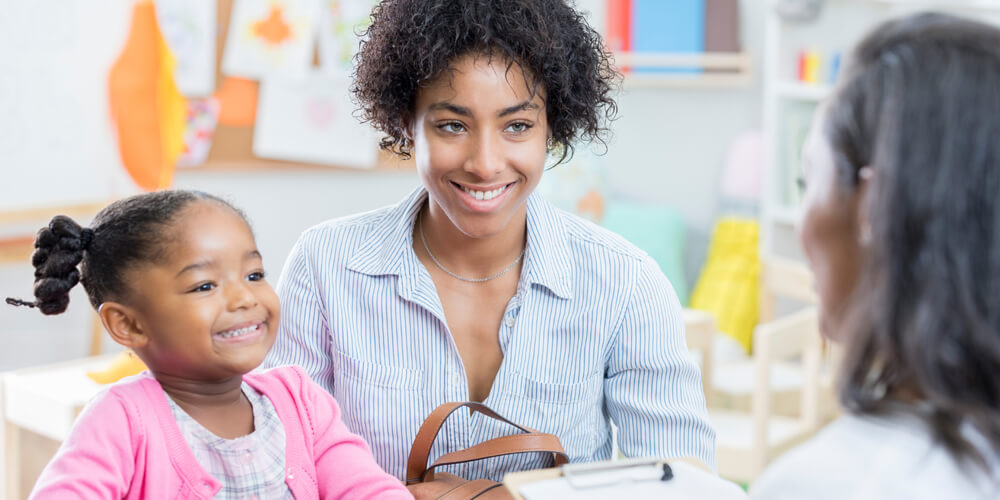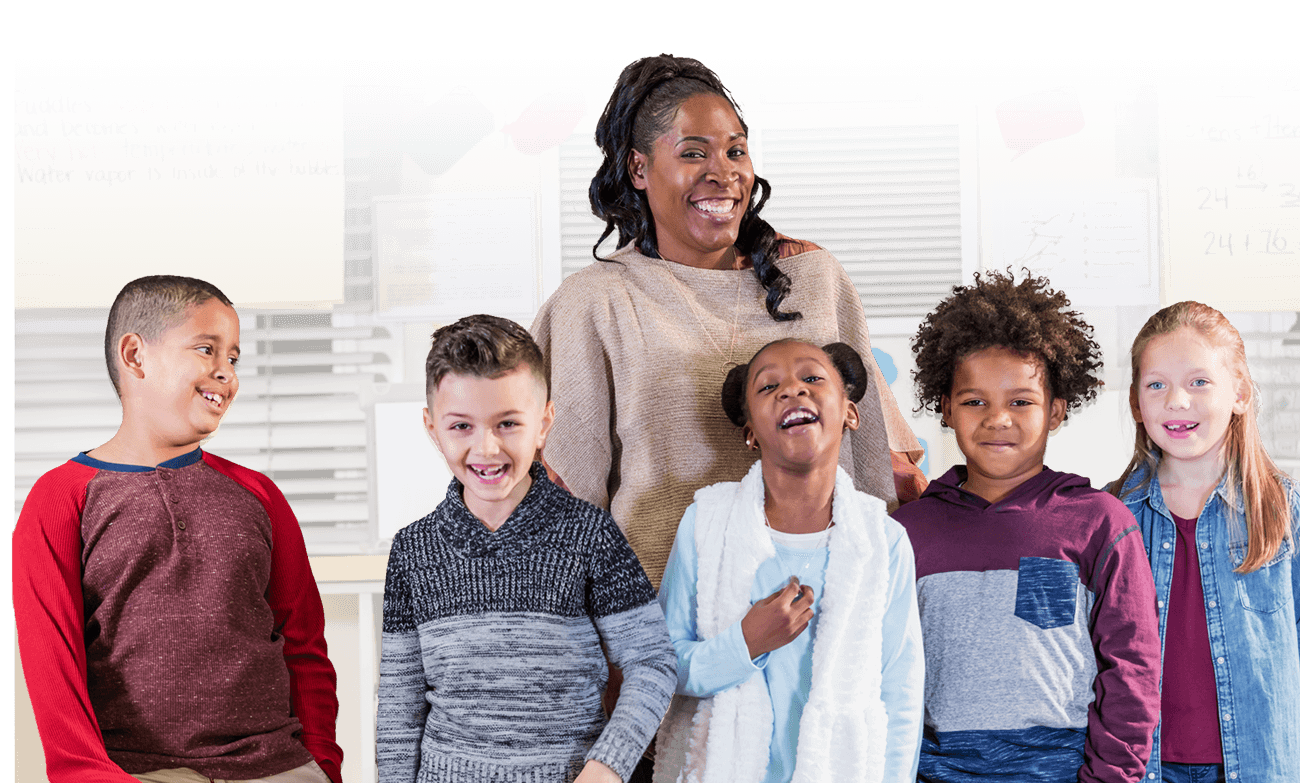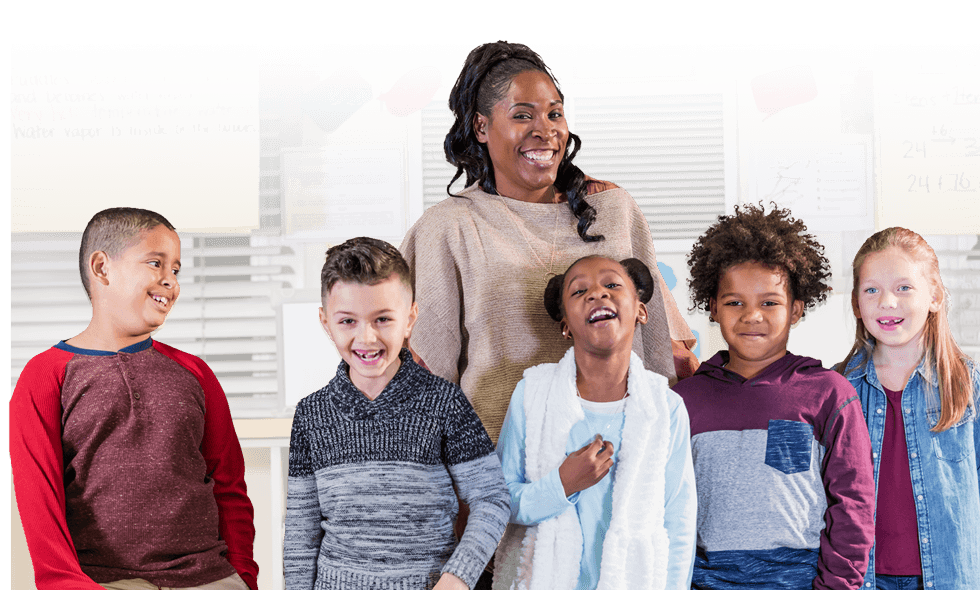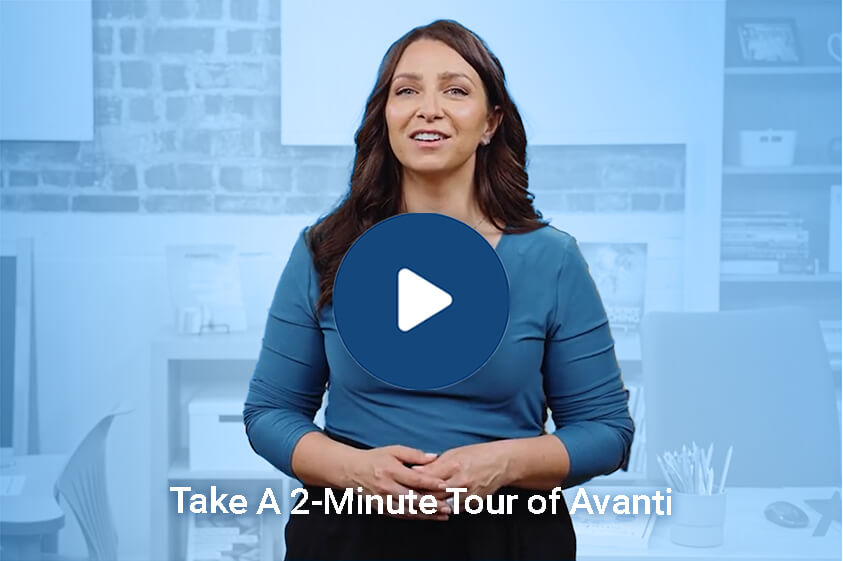Ask some friends if they can still name teachers from their K–12 education who they remember fondly. Ask about teachers who made a lasting impact, went above and beyond as an educator, or influenced how they saw the world beyond the classroom walls. As a teacher, your ability to build relationships lays a foundation for a lifelong appreciation of learning and creating relationships with others. Explore why strong connections are essential in education and learn new strategies for forging meaningful relationships.
Why Is It Important to Build Relationships with Students?
In addition to shaping more well-adjusted individuals, trusting relationships between teachers and students also have more immediate effects. Here are some benefits of building quality relationships with students:
ACADEMIC SUCCESS
Decades of research, studies, analysis, and reviews conclude that positive relationships encourage learning and academic success. From an early age, teacher-student relationships can spur substantial gains in elementary students’ reading achievement—with long-lasting implications for academic development and higher grades throughout their education. Warm and empathetic relationships with their teachers encourage enhanced student engagement, the development of critical thinking skills, and both perceived and actual achievement.
EXTRA MOTIVATION
Children will work harder and push themselves further for adults and authority figures they trust. Studies also show that close relationships help students become more motivated learners.
Inspired by a positive relationship with their teacher, students become more likely to dive enthusiastically into their studies. When they feel that teachers genuinely care about and are invested in their success, students often cherish chances to impress their teachers and fearlessly engage in new or challenging schoolwork.
GOOD BEHAVIOR
Positive relationships across school settings don’t just provide a motivational trigger or spur academic success—they also help make teachers’ lives easier by promoting prosocial tendencies and good student behavior. Students benefiting from a positive relationship with their teacher display less aggressiveness toward peers and develop prosocial behaviors such as cooperation and altruism.
IMPROVED MENTAL HEALTH
Especially for students deemed “at-risk,” experiencing a learning disability, or otherwise simply struggling to grasp new concepts, a healthy, nurturing, and encouraging relationship with their teacher becomes a critical source for feelings of confidence, self-worth, and improved mental health.
This benefit is a two-way street—students aren’t the only ones who may need a mental health boost. Strong classroom relationships with students can lower anxiety, put a spring in your step, and reignite any teacher’s joy for their craft.
The Benefits of Building Relationships
Academic Success
Extra Motivation
Good Behavior
Improved Mental Health
Building Positive Student-Teacher Relationships as a New Teacher
Unlike some professional fields, teaching has the same responsibilities for both first-year rookies and veteran educators. New teachers are often filled with anticipation and excitement when answering their educational calling. They bring new and innovative ideas to the classroom but may need to gain more experience working with larger groups, leading to the need for help with classroom management and guidance on how to build relationships with students.
How do you build authentic relationships with students as a new teacher? Keep your eyes open for chances to sneak in quick conversations or every opportunity to build sincere rapport. Don’t be discouraged that you haven’t immediately “clicked” or formed instant connections with every student. Every child is different. Some may be more guarded than others or present more of a challenge for connecting on a personal level.
After you’ve spent some time building relationships across your class, you can gauge how your efforts are working by creating a list of students and ranking how well you believe you’ve gotten to know them. Identifying who you do—and, more importantly, don’t—have a strong relationship with is the first step toward examining why those relationships haven’t developed. Once you have identified the underlying reasons for your difficulties building the relationship, changing your approach will be much easier.
Likely, students with whom you still need to develop closer relationships are also those who present more behavioral challenges or have had to receive more negative feedback than most. Building trust with these students may require you to take a step back and analyze the feedback you give them from their perspective. Try to put yourself in their shoes and consider different aspects of their experience, and hone in on the root causes of their behavior or attitudes by asking yourself questions.
- Do your students have reason to believe that you genuinely care about them? Take the time to get to know their names and their interests. Show up to their choir concert or track meet.
- When you provide feedback to them, are your emotions in check? Make a point to take time to explain why specific rules are in place. Establishing clear guidelines and fair consequences helps create a respectful environment where students know your expectations.
- Whether it’s positive or negative, how do they respond to your feedback? Some students do not respond well to feedback in front of the entire class. One-on-one, individual conferences with students can be effective opportunities for addressing specific items or uncovering why they may like or dislike certain subjects or elements of the school environment. Search for any common ground you can find and use it to develop a relationship built on mutual trust and respect.
- Do outside influences, conditions, or experiences outweigh your impact on their behavior, attitude, and actions? Keep up on traumatic events that may have happened in other parts of the school, neighborhood, or nation at large so that you may be sensitive to your students’ social and emotional needs.
Discipline can be a problematic teaching element for new teachers to navigate successfully at first, but constructively and compassionately correcting unruly behavior can present unique opportunities to strengthen relationships with students.
Building Relationships Virtually
Compared to the long history of physical classroom settings, building relationships and increasing engagement in the virtual classroom is a relatively new challenge for teachers of any tenure and grade level. The COVID-19 pandemic marked a pivotal point in the necessity and acceptance of remote learning. Find some best practices for how to build relationships online and how to increase student engagement in a virtual setting below.
- Connect Frequently Over Multiple Forms of Communication — Learning is an inherently social endeavor. Students are used to seeing, hearing, and having face-to-face conversations with you every day. Staying in some form of frequent contact across multiple methods of communication (emails, class message boards, livestreams, etc.) helps assure students that you’re still “there” for them despite the virtual learning setting.
- “Soft Start” Students Into the Day — Not only in the morning—although predominantly in the morning—students will benefit from having a few moments at the beginning of class to settle in and mentally prepare for the day’s activities. Quick journaling, an educational game, or simply chit-chatting to review any highlights of students’ weekends can help stimulate students’ minds before learning. This is also a good strategy for in-person learning, but it is especially helpful for getting students into a productive mindset for distance learning.
- Utilize Social Media — Social media can be a valuable educational tool that also helps promote positive student-teacher relationships. Create private Facebook Groups as an online learning hub for students and an invaluable source for announcements and sharing work with parents or guardians. Twitter can also broadcast classroom updates and invite interactive participation. Meanwhile, platforms such as Instagram, Pinterest, or YouTube can be great mediums for assigning students photo or video essay assignments.

Teacher-Student Relationships
Every student is different. A host of unique, potentially nuanced factors will influence any teacher-student relationship. Make genuine attempts to get to know them, use icebreakers, and make lessons engaging to students’ interests to help keep an open dialogue. Experiment with trying some of the following strategies for building relationships with your students in the classroom.
- Take Care of Yourself — Give yourself a little grace on tough days. You’re only human, and personal or professional issues will arise. However, if you’re experiencing burnout, you may find building positive relationships challenging. Focusing on your physical and mental health first makes you more likely to radiate positivity and passion toward teaching and your students. A series of self-monitoring strategies can also help you set daily intentions and direct your demeanor toward successfully building better relationships.
- Use Active Listening — “We must reconsider the old notion that students must be quiet and listen to their teachers,” educator and author Beth Pandolpho writes. “In order to break through the distraction and noise of their smartphones, we need to listen to them.”
- Harness the Power of Laughter and Humor — Research proves laughter has psychological, physiological, and sociological benefits while also easing tension and fostering a healthy environment conducive to both fun and learning.
- Student Jobs and Responsibilities — Show students that you trust them to take care of small tasks and have some ownership over their classroom experience. They’ll gain self-esteem and pride in their work while you have precious moments freed up to focus on more essential items or give extra attention to students who need more instruction.
Student-Student Relationships
You aren’t the only one in the classroom with whom students need to have good relationships. Research shows that positive student-student relationships motivate and inspire engagement while helping make children more resilient and developing their social skills. We want our students to enjoy being at school, and positive relationships with classmates become significant factors influencing their overall experience.
Games, team-building activities, and getting-to-know-each-other exercises are often a focus for teachers in the opening days of the school year, but returning to them from time to time is a fun change of pace and encourages ongoing connections through student-to-student relationships in the classroom year-round.
In addition to occasional group work and conducting assignments or a project with a friend or friends, encourage students to expand their social circles by pairing them with peers they aren’t already close with—you never know, you may play a small part in creating a lifelong and rewarding friendship.
Teacher-Parent Relationships
While student-teacher relationships and peer connections between students are pivotal to the day-to-day effectiveness of students’ learning, healthy relationships between teachers and parents are another piece of the education puzzle. They are foundational for encouraging whole-family engagement in a child’s learning.
If students see their parents and teachers interacting positively, they’ll be more inclined to trust and have better relationships with their teachers. When approaching relationships with your students’ parents, consider the following strategies:
- Quickly establish positive and welcoming communication with parents before the school year begins.
- Continue that correspondence throughout the school year. Whether through a classroom newsletter, emails, private social media groups, or personal phone calls, continue to build respectful rapport with parents through check-in, progress reports, and other updates on their children’s learning.
- Project positivity, professionalism, and confidence throughout every parent interaction.

Untap the Full Power of Relationships in Schools with Avanti
Avanti recognizes the grand importance of student-teacher relationships and building genuine connections, making the practice a priority among our online and on-demand professional development resources. Developing quality relationships with a classroom full of diverse students and differing personalities may seem daunting at times, but new and seasoned educators alike can benefit from refreshing their teaching toolkit with new relationship-building strategies from time to time.
The vast and ever-expanding Avanti resource library includes brief, on-demand, and experience-based videos dedicated to strategies and approaches for understanding students’ backgrounds and interests. Accompanying implementation guides, reflection rubrics, and more downloadable resources make it easy to quickly put new proven strategies into practice in your classroom. An affordable annual Avanti membership also includes:
- Monthly livestream speaker series presentations and interactive discussions
- A community collaboration space as well as personal reflection and journaling features
- An easy-to-use online platform accessible from anywhere with even-easier-to-implement strategies addressing your unique classroom needs or challenges
- Teacher training time may apply toward continuing education credits for state licensing requirements (Note: Confirm with your local district office)



